Abstract
The response to oxazolone, painted on the skin, has been studied in the regional lymph nodes of normal adult CBA/H mice and of thymectomized, X-irradiated, bone-marrow injected mice with or without a reconstituting thymus graft. The thymus grafts carry a marker chromosome so that, in a reconstituted animal, cells derived from bone marrow and from the thymus can be distinguished. The response to oxazolone appears to be biphasic and both thymus-derived and bone-marrow-derived cells participate in it. In the first stage, normal mice show a massive proliferation of thymus-derived cells in the paracortex which reaches a peak on day 4. This reaction is absent in thymectomized mice but is restored if animals are grafted with a syngeneic thymus. The second stage consists of proliferation of bone-marrow derived cells which is maximal on day 8 and is then sustained, at a slightly lower level, for the rest of the experiment. It coincides with germinal centre formation and hyperplasia of the medullary cords—changes which are best seen in normal and reconstituted mice though they are also present to a lesser extent in thymectomized animals. The part played by bone-marrow derived elements in the immune response to oxazolone is not known but that there is a considerable proliferation of these cells in the later stages in the present experimental model is certain.
Full text
PDF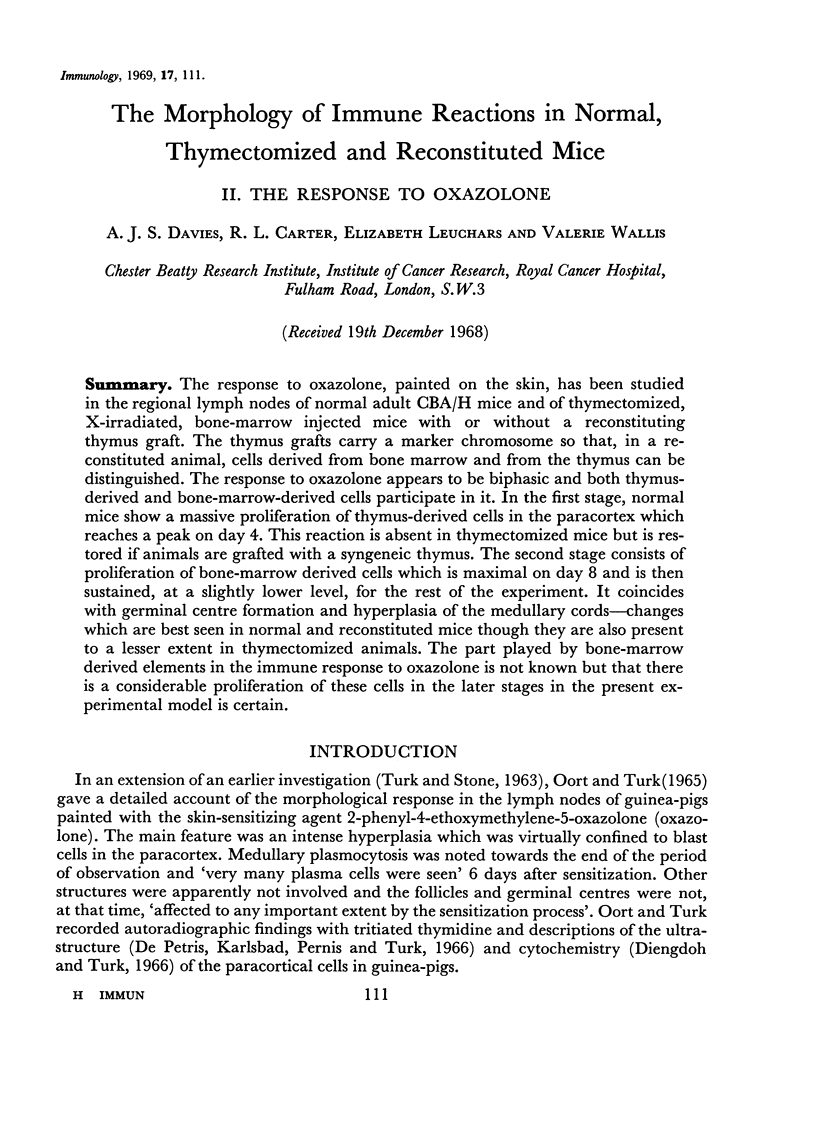
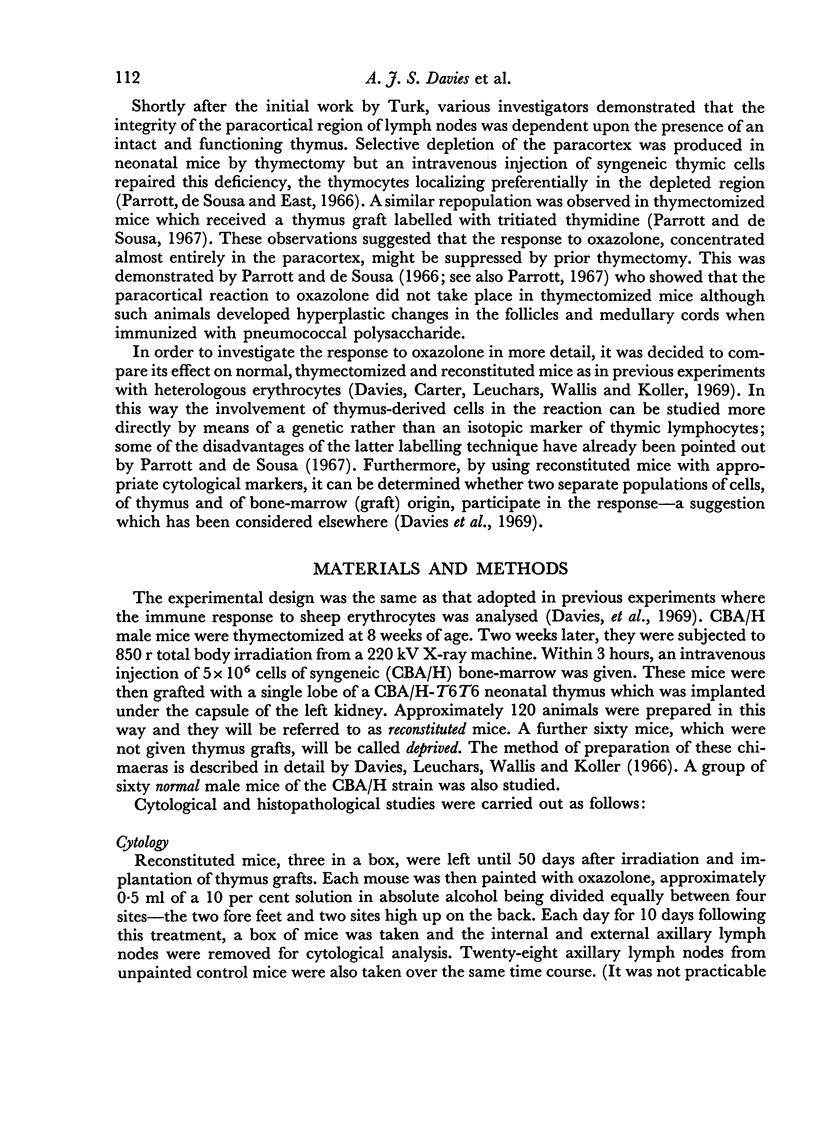
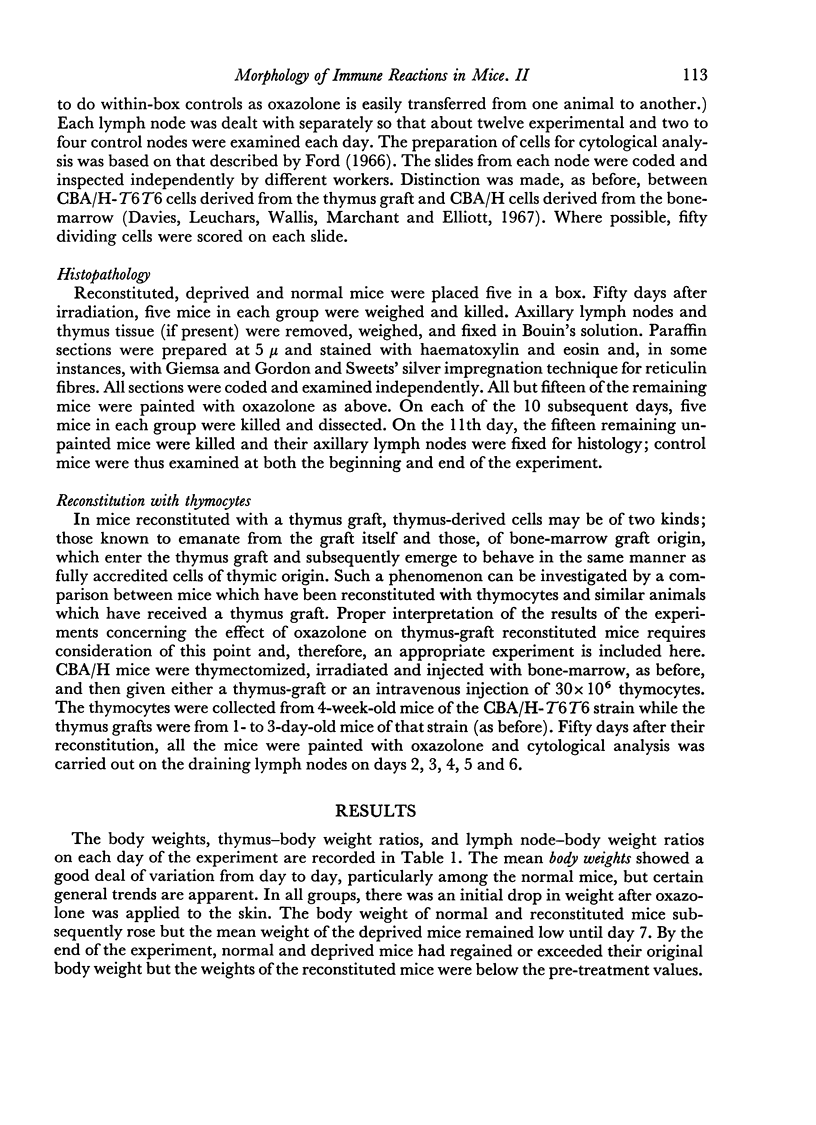
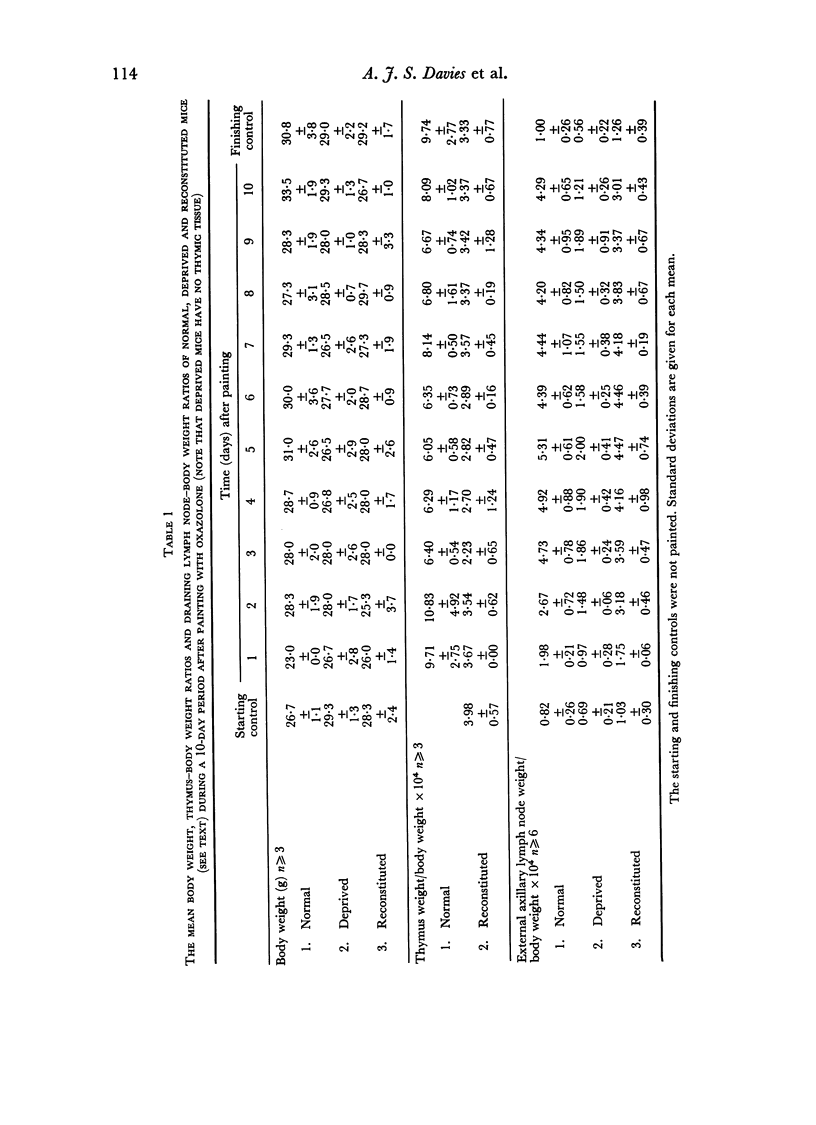
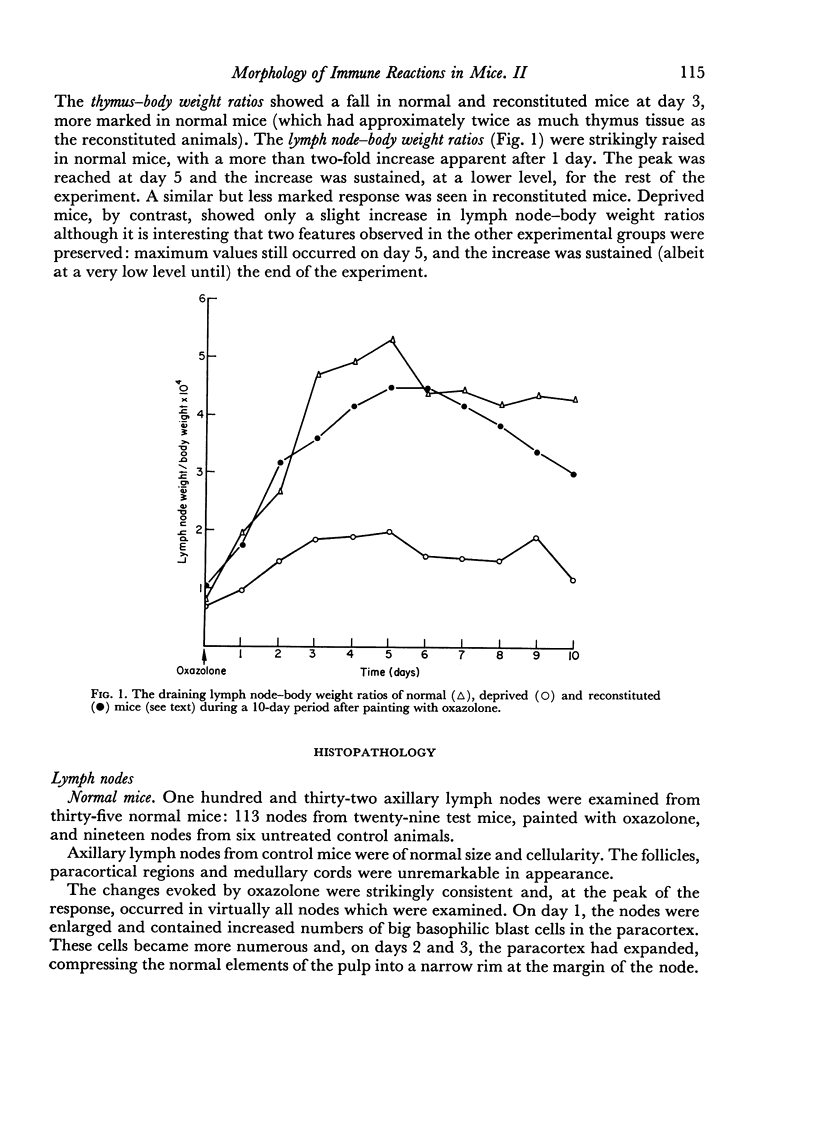
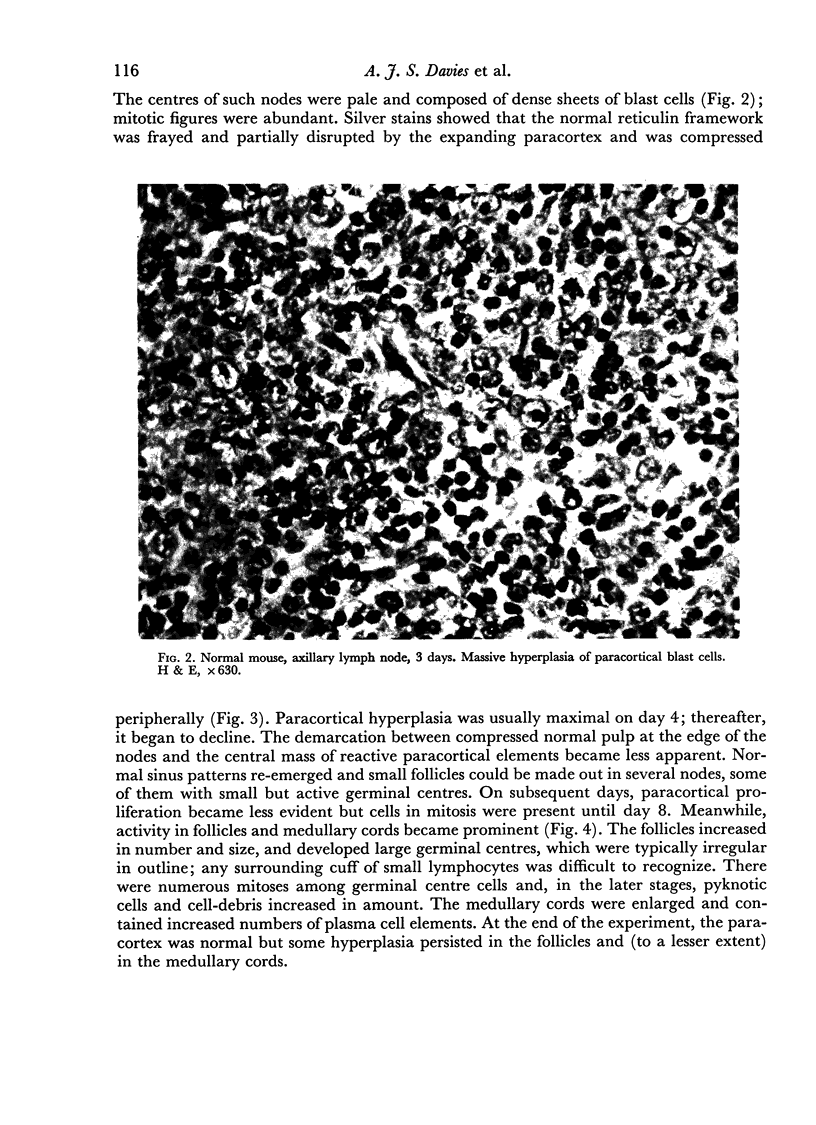
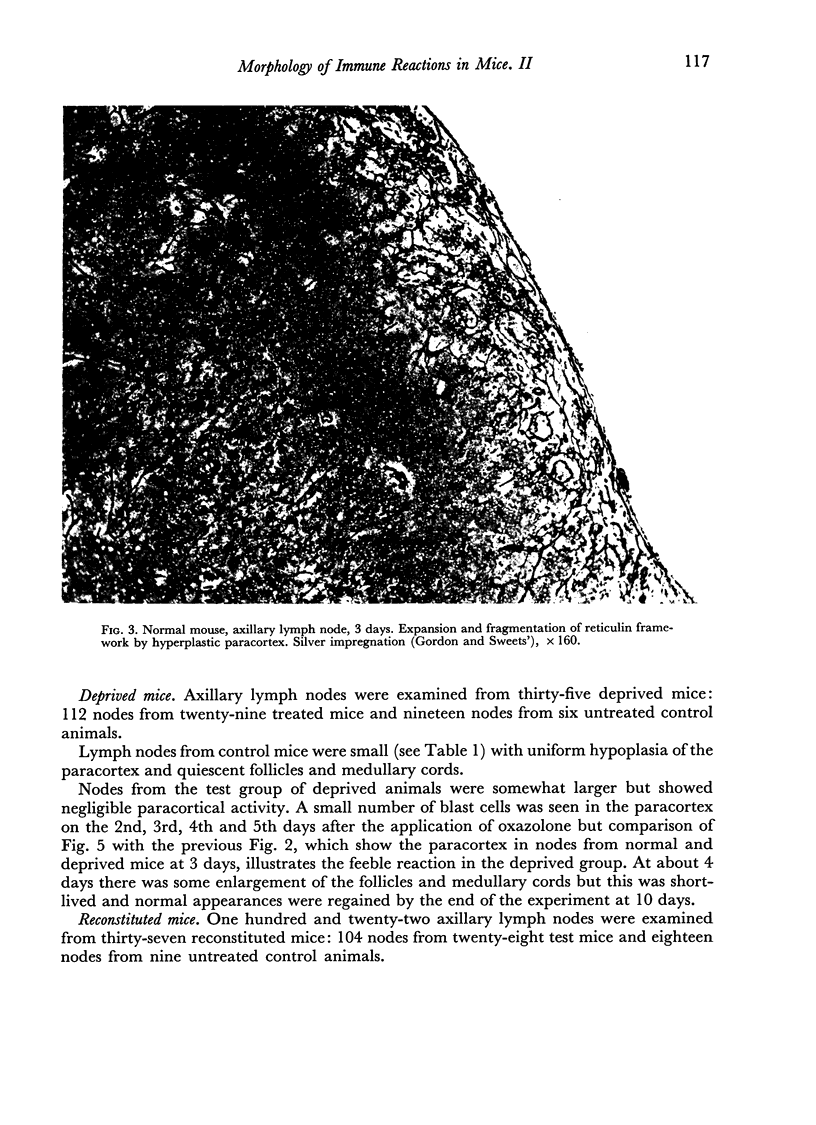
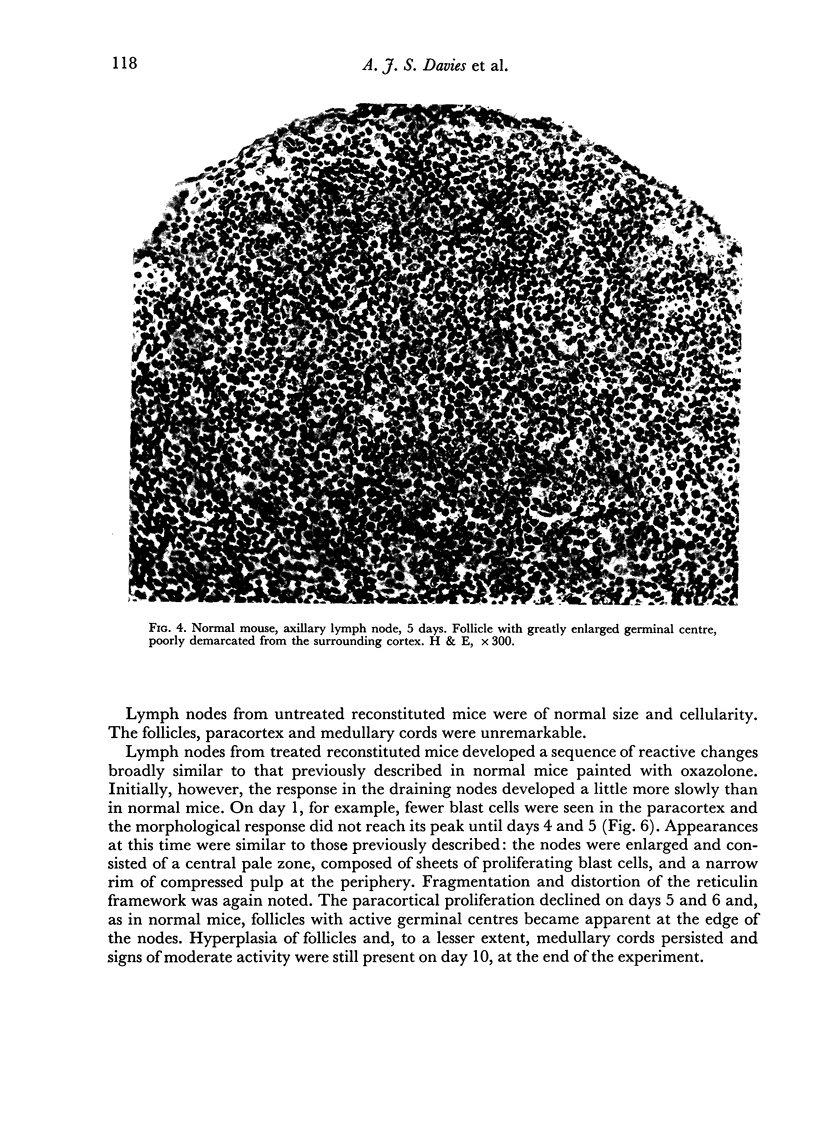
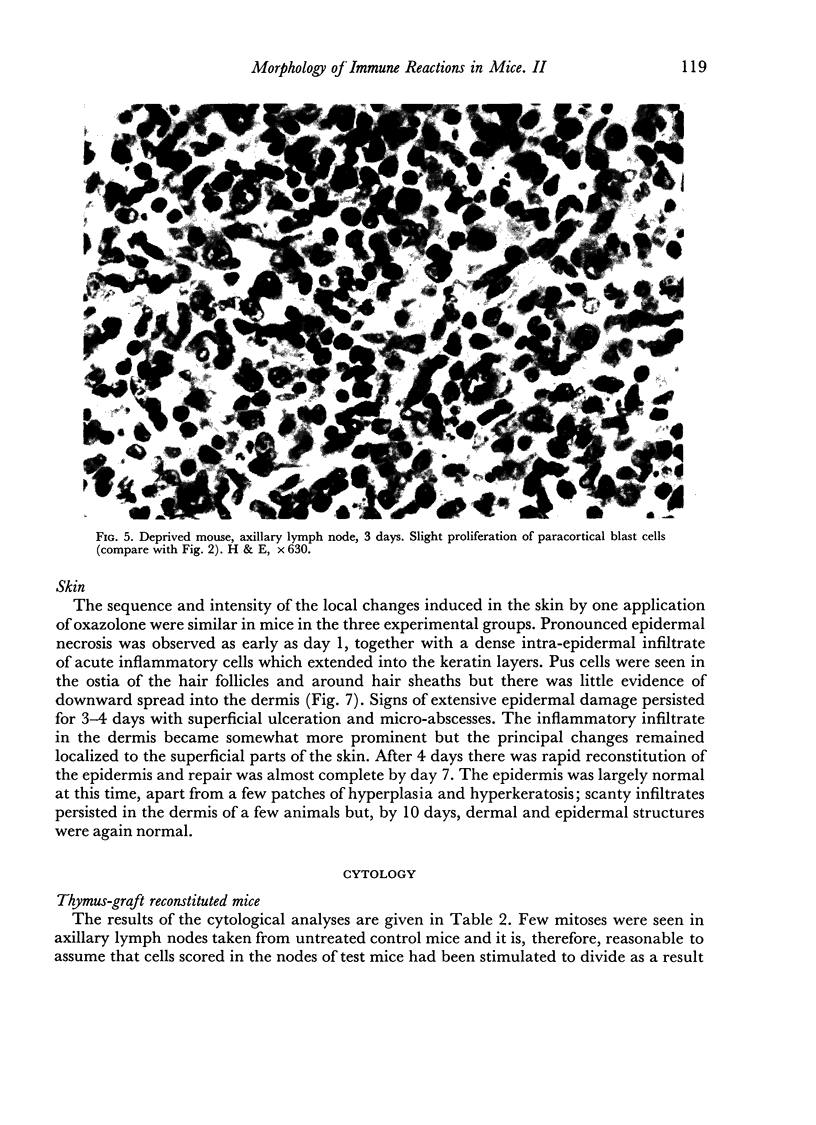
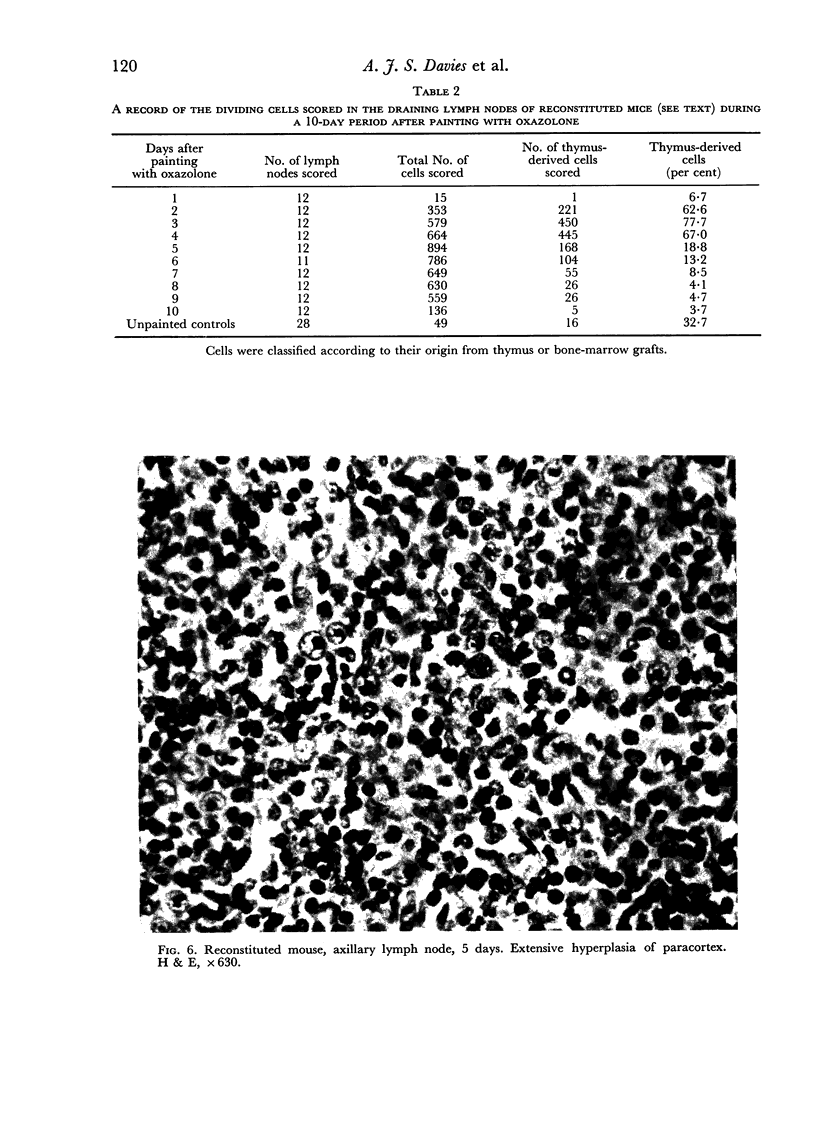
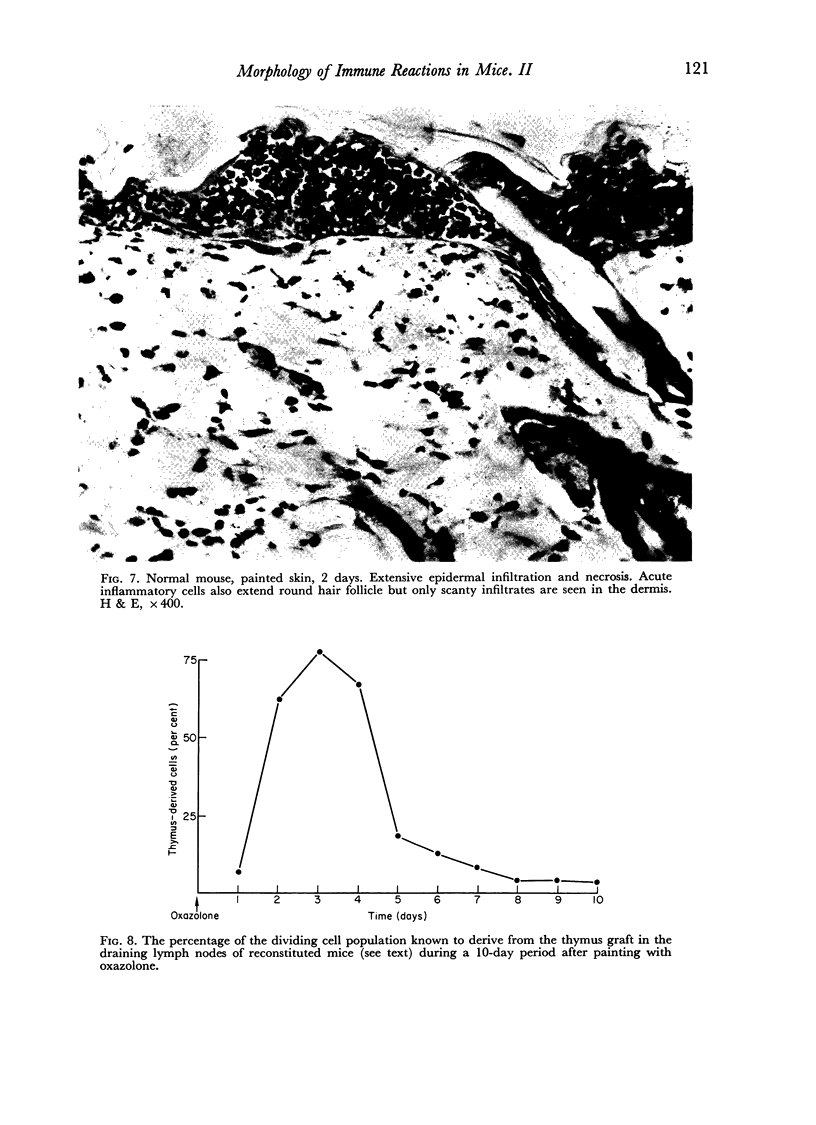
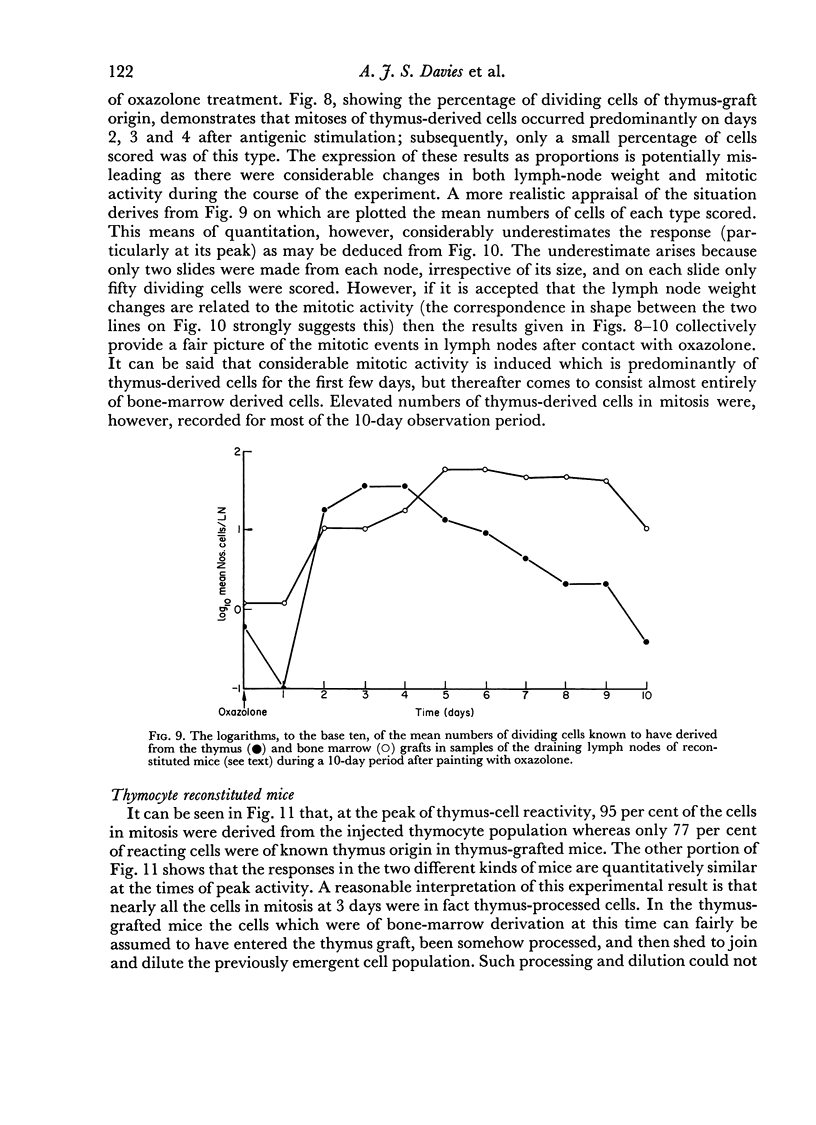
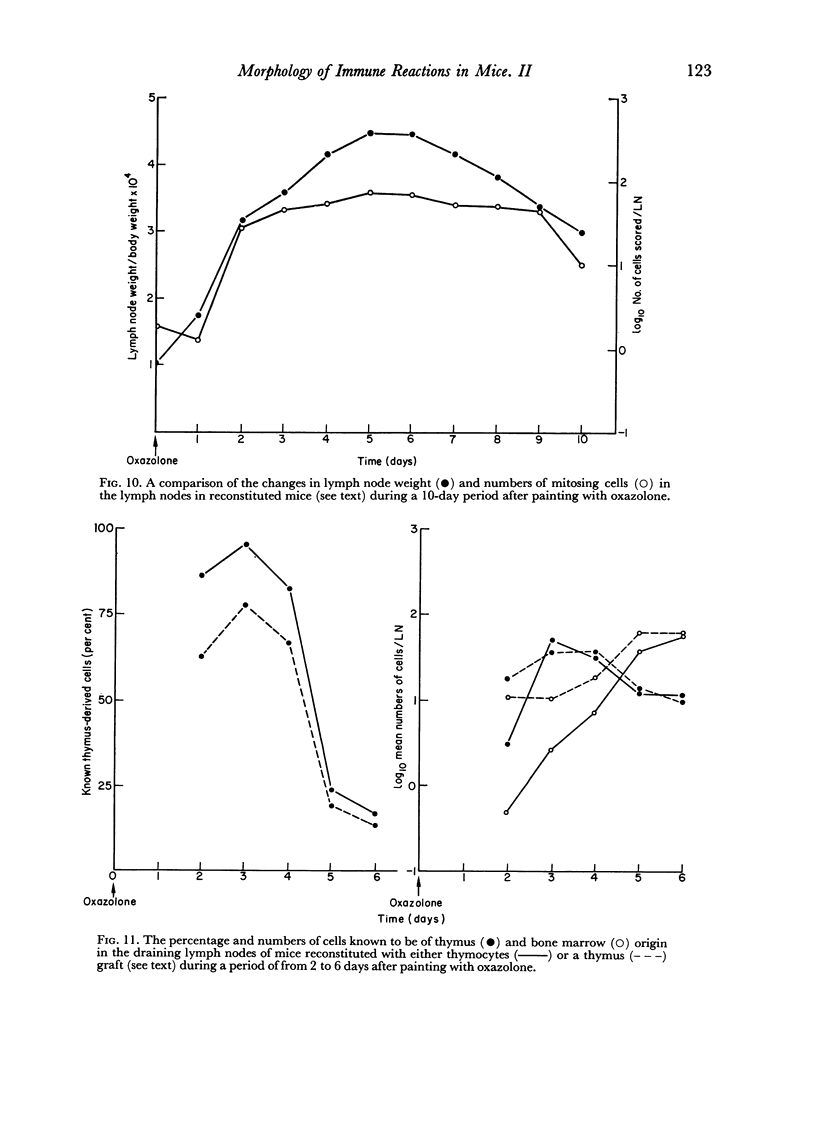
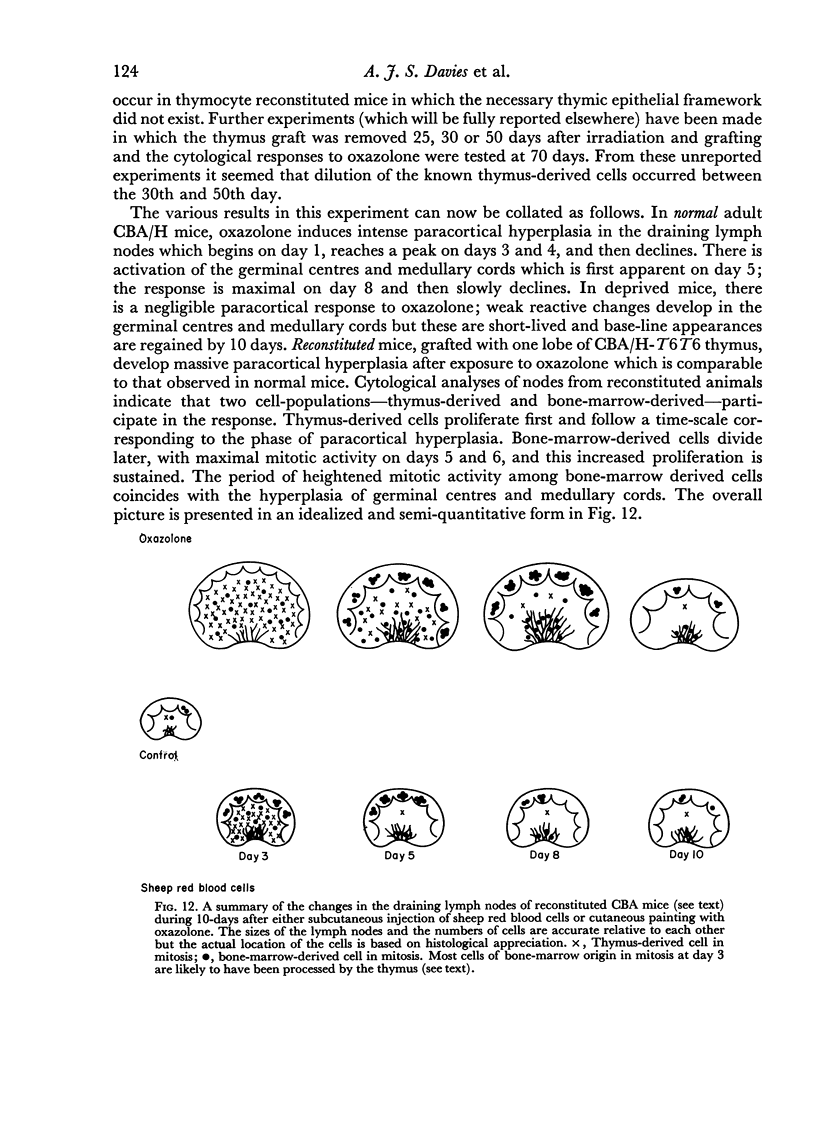
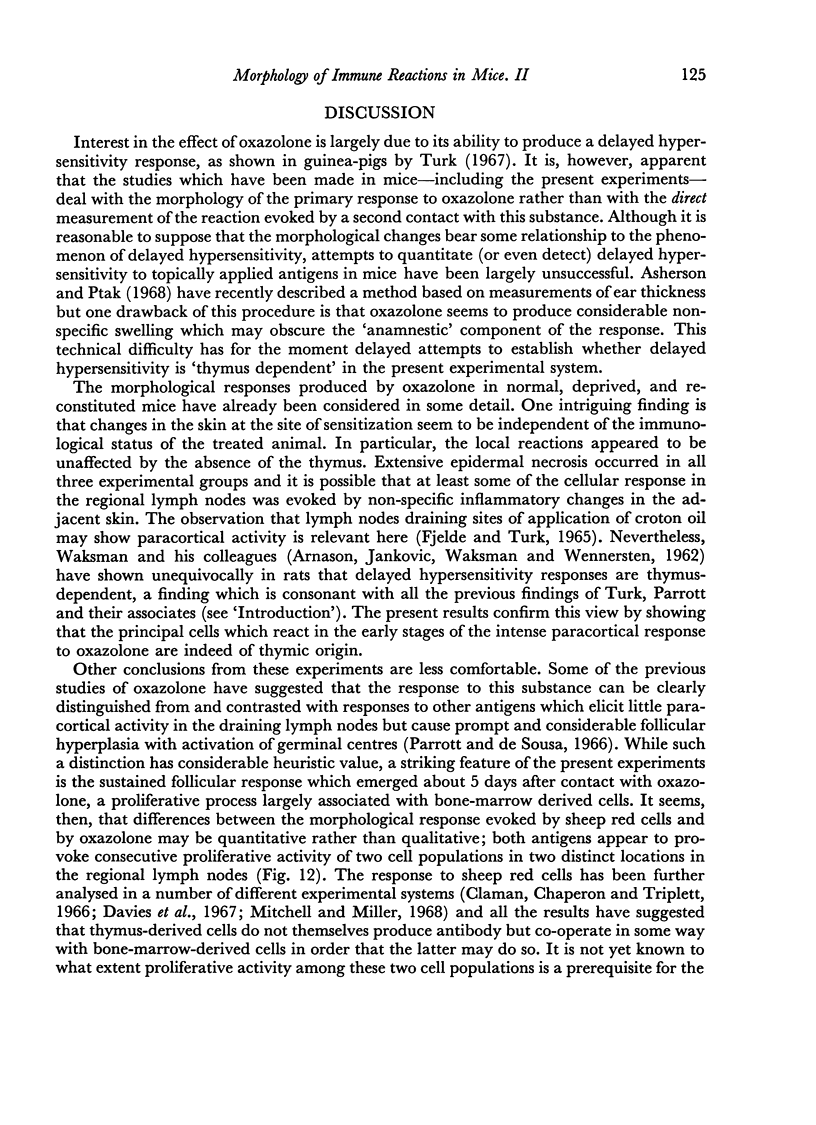
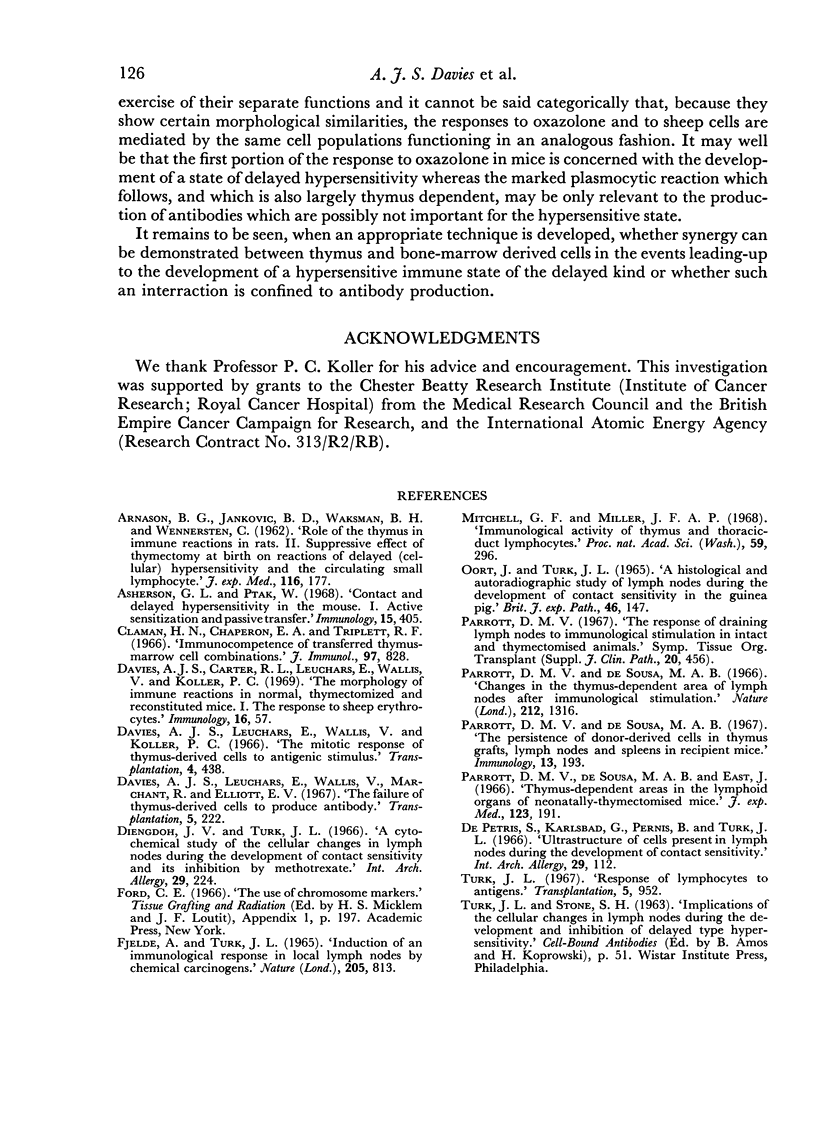
Images in this article
Selected References
These references are in PubMed. This may not be the complete list of references from this article.
- ARNASON B. G., JANKOVIC B. D., WAKSMAN B. H., WENNERSTEN C. Role of the thymus in immune reactions in rats. II. Suppressive effect of thymectomy at birth on reactions of delayed (cellular) hypersensitivity and the circulating small lymphocyte. J Exp Med. 1962 Aug 1;116:177–186. doi: 10.1084/jem.116.2.177. [DOI] [PMC free article] [PubMed] [Google Scholar]
- Asherson G. L., Ptak W. Contact and delayed hypersensitivity in the mouse. I. Active sensitization and passive transfer. Immunology. 1968 Sep;15(3):405–416. [PMC free article] [PubMed] [Google Scholar]
- Claman H. N., Chaperon E. A., Triplett R. F. Immunocompetence of transferred thymus-marrow cell combinations. J Immunol. 1966 Dec;97(6):828–832. [PubMed] [Google Scholar]
- Davies A. J., Carter R. L., Leuchars E., Wallis V., Koller P. C. The morphology of immune reactions in normal, thymectomized and reconstituted mice. I. The response to sheep erythrocytes. Immunology. 1969 Jan;16(1):57–69. [PMC free article] [PubMed] [Google Scholar]
- Davies A. J., Leuchars E., Wallis V., Koller P. C. The mitotic response of thymus-derived cells to antigenic stimulus. Transplantation. 1966 Jul;4(4):438–451. doi: 10.1097/00007890-196607000-00008. [DOI] [PubMed] [Google Scholar]
- De Petris S., Karlsbad G., Pernis B., Turk J. L. Ultrastructure of cells present in lymph nodes during the development of contact sensitivity. Int Arch Allergy Appl Immunol. 1966;29(2):112–130. doi: 10.1159/000229693. [DOI] [PubMed] [Google Scholar]
- Mitchell G. F., Miller J. F. Immunological activity of thymus and thoracic-duct lymphocytes. Proc Natl Acad Sci U S A. 1968 Jan;59(1):296–303. doi: 10.1073/pnas.59.1.296. [DOI] [PMC free article] [PubMed] [Google Scholar]
- OORT J., TURK J. L. A HISTOLOGICAL AND AUTORADIOGRAPHIC STUDY OF LYMPH NODES DURING THE DEVELOPMENT OF CONTACT SENSITIVITY IN THE GUINEA-PIG. Br J Exp Pathol. 1965 Apr;46:147–154. [PMC free article] [PubMed] [Google Scholar]
- Parrott D. M., de Sousa M. A. Changes in the thymus-dependent areas of lymph nodes after immunological stimulation. Nature. 1966 Dec 17;212(5068):1316–1317. doi: 10.1038/2121316a0. [DOI] [PubMed] [Google Scholar]
- Parrott D. M., de Sousa M. A. The persistence of donor-derived cells in thymus grafts, lymph nodes and spleens of recipient mice. Immunology. 1967 Aug;13(2):193–200. [PMC free article] [PubMed] [Google Scholar]
- Parrott D. V., De Sousa M. A., East J. Thymus-dependent areas in the lymphoid organs of neonatally thymectomized mice. J Exp Med. 1966 Jan 1;123(1):191–204. doi: 10.1084/jem.123.1.191. [DOI] [PMC free article] [PubMed] [Google Scholar]
- Turk J. L. Lymphocyte response to antigens. A. Afferent side of sensitization arc. Response of lymphocytes to antigens. Transplantation. 1967 Jul;5(4 Suppl):952–961. doi: 10.1097/00007890-196707001-00025. [DOI] [PubMed] [Google Scholar]








